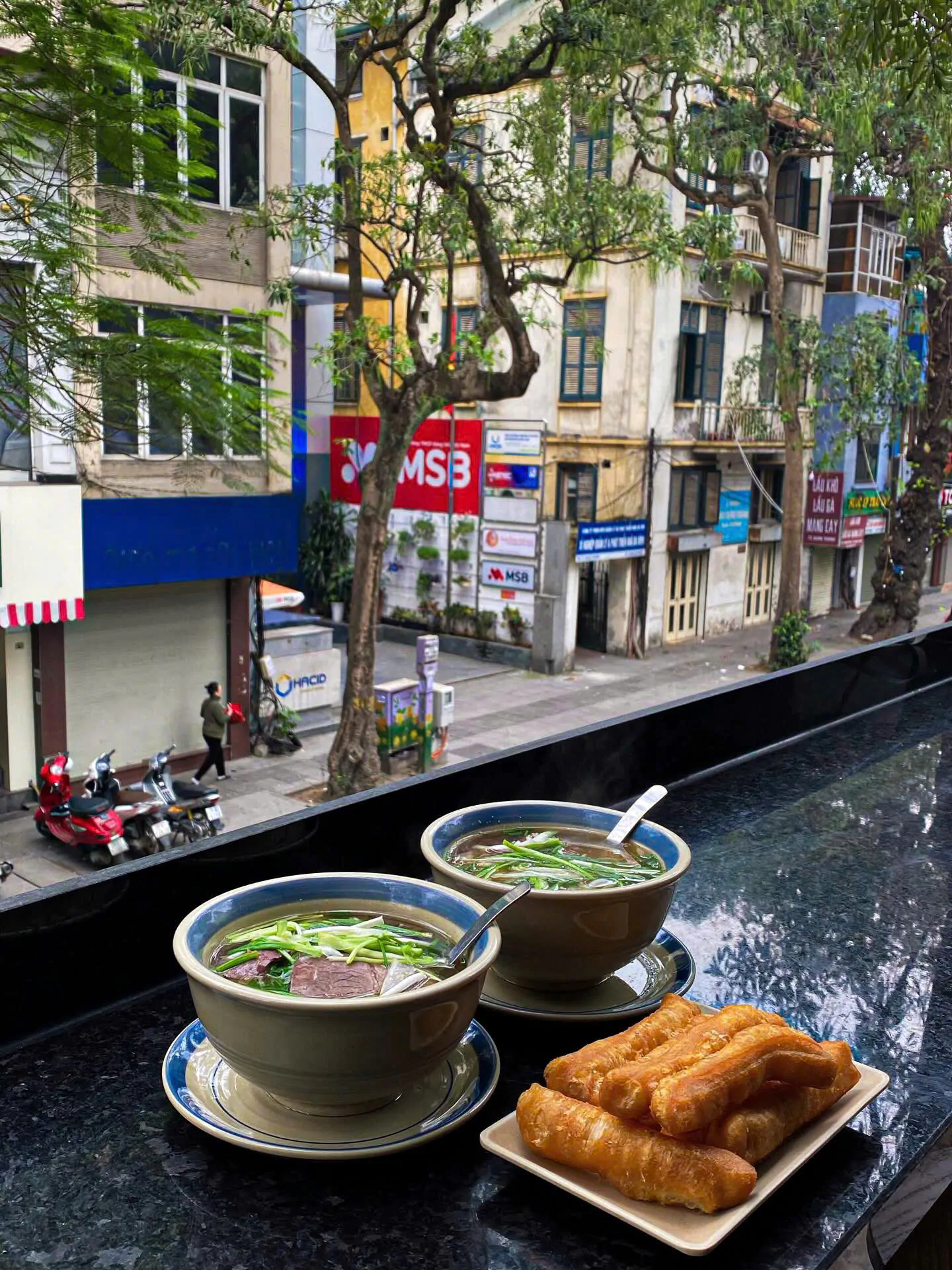Quan Thang Ancient House: Explore Hoi An’s Oriental Charm
Quan Thang Ancient House is a must-visit gem in Hoi An, showcasing the city’s rich cultural heritage and exquisite Oriental architecture. As part of your Vietnam Discovery Travel journey, this historic house offers a captivating glimpse into Hoi An’s past, with its intricate woodwork and antique furnishings. Dating back over 150 years, Quan Thang House blends Chinese and Vietnamese styles, reflecting the vibrant trade history of the region. Explore this architectural masterpiece to experience the unique charm and historical depth of Hoi An

1. History of Quan Thang Ancient House
Quan Thang Ancient House is one of the oldest and most well-preserved merchant houses in Hoi An, Vietnam. This historic house dates back more than 150 years and was originally built by a wealthy Chinese merchant family from Fujian Province. Over the years, it has been passed down through generations, retaining its original charm and authenticity.
The house reflects the prosperous era of Hoi An when it was a thriving international trading port. The architectural style of Quan Thang Ancient House is heavily influenced by Chinese design, with intricate wooden carvings, beautiful antique furniture, and traditional courtyard layouts. It stands as a testament to the cultural and historical exchanges that characterized Hoi An during the 18th and 19th centuries.
2. Architecture and Structure
Quan Thang Ancient House showcases a fascinating blend of Chinese and Vietnamese architectural styles, making it a unique cultural treasure in Hoi An. The house is designed with a traditional Chinese layout, featuring three main sections: the front hall, the middle courtyard, and the back hall.
- Front Hall: The front hall serves as the reception area and was historically used to welcome guests and conduct business transactions. The space is adorned with elaborate wooden carvings, including motifs of dragons and phoenixes, which symbolize prosperity and good fortune. The hall’s wooden beams and pillars are made from high-quality ironwood, known for its durability and resistance to termites.
- Middle Courtyard: The middle courtyard is an open-air space that allows natural light and air to circulate throughout the house. This area serves as a tranquil garden, providing a serene environment for the family and visitors. The courtyard is often decorated with potted plants, bonsai trees, and traditional lanterns, creating a peaceful and picturesque setting.
- Back Hall: The back hall is the living space where the family resides. This area includes bedrooms, a kitchen, and storage rooms. The interior is furnished with antique furniture, including wooden cabinets, carved beds, and intricate screens. The back hall also features ancestral altars where the family honors their ancestors.
The architecture of Quan Thang Ancient House is a remarkable example of the cultural fusion that defines Hoi An. The house’s design incorporates feng shui principles, ensuring harmony and balance in every aspect of its layout.
3. What to See and Do?
Quan Thang Ancient House offers visitors a unique opportunity to immerse themselves in the rich cultural heritage of Hoi An. Here are some highlights of what you can see and do during your visit:
3.1. Explore Amazing Oriental Architecture
One of the main attractions of Quan Thang Ancient House is its exquisite Oriental architecture. The house’s design is a harmonious blend of Chinese and Vietnamese elements, reflecting the multicultural influences that have shaped Hoi An. As you explore the house, take note of the intricate wooden carvings, beautiful tile work, and ornate decorations that adorn every corner.
The house’s architecture is not only aesthetically pleasing but also functional. The layout is designed to maximize natural light and ventilation, creating a comfortable living environment even during the hot summer months. The use of traditional materials, such as wood, clay tiles, and stone, adds to the house’s authenticity and charm.
3.2. Learn about Building Materials
Quan Thang Ancient House is a testament to the craftsmanship and skill of the artisans who built it. The house is constructed using high-quality materials, many of which were imported from China. The wooden beams and pillars are made from ironwood, a durable and long-lasting material that is resistant to termites and rot.
The house’s roof is covered with traditional clay tiles, which provide insulation and help regulate the temperature inside. The walls are made of brick and plaster, which offer structural stability while allowing the house to “breathe.” The floor is covered with large ceramic tiles, some of which are hand-painted with intricate designs.
As you explore the house, you’ll gain a deeper appreciation for the craftsmanship and attention to detail that went into its construction. The building materials used in Quan Thang Ancient House are not only functional but also add to the house’s historical and cultural significance.
3.3. Contemplate Precious Ancient Antiques
Inside Quan Thang Ancient House, you’ll find a collection of precious ancient antiques that have been carefully preserved over the centuries. These artifacts provide a glimpse into the daily life of the family that lived here and offer insights into the cultural exchanges that took place in Hoi An.
Some of the notable antiques on display include:
- Porcelain and Ceramics: The house features a collection of exquisite porcelain and ceramic items, many of which were imported from China. These pieces include vases, bowls, and plates, each decorated with intricate patterns and motifs.
- Furniture: The furniture inside Quan Thang Ancient House is made from high-quality wood and showcases the skill of local craftsmen. The pieces are both functional and decorative, featuring intricate carvings and inlays. Notable items include wooden cabinets, tables, and chairs, as well as intricately carved wooden beds.
- Calligraphy and Paintings: The walls of the house are adorned with beautiful calligraphy and paintings, many of which were created by renowned artists of the time. These works of art add to the house’s cultural and historical significance.
- Ancestral Altars: The house contains several ancestral altars, which are used to honor the family’s ancestors. These altars are intricately carved and adorned with offerings, incense, and other ceremonial items.
4. How to Get There?
Address: 77 Tran Phu Street, Minh An Ward, Hoi An, Quang Nam Province, Vietnam
Price: Entrance is included in the ticket to Hoi An Ancient Town, which costs approximately $6.00 (150,000 VND) and allows access to several attractions.
Quan Thang Ancient House is conveniently located in the heart of Hoi An Ancient Town, making it easily accessible for visitors exploring the area. The house is situated on Tran Phu Street, one of the main streets in the old town, and is just a short walk from other popular attractions such as the Japanese Covered Bridge and the Hoi An Market.
To get to Quan Thang Ancient House, you can walk or bike from any location within the ancient town. If you’re staying outside the old town, you can take a taxi or a motorbike taxi to reach the area. The ancient town is a pedestrian-friendly zone, so once you arrive, you can explore the attractions on foot.
5. Extra Tips
- Best Time to Visit: To fully appreciate the beauty and history of Quan Thang Ancient House, visit during the early morning or late afternoon. This will help you avoid the peak tourist crowds and the midday heat.
- Dress Comfortably: Since Hoi An can get quite hot, especially during the summer months, it’s advisable to wear light, breathable clothing and comfortable walking shoes. Hats and sunscreen are also recommended.
- Photography: Photography is allowed inside Quan Thang Ancient House, but it’s important to be respectful and avoid using flash, especially when photographing antiques or artworks.
- Guided Tours: For a more in-depth understanding of the house’s history and architecture, consider joining a guided tour. Many tours are available in multiple languages and can provide valuable insights into the cultural significance of the house.
- Combine with Other Attractions: Quan Thang Ancient House is located close to several other historical sites in Hoi An Ancient Town. Consider combining your visit with a trip to the Japanese Covered Bridge, the Phuc Kien Assembly Hall, and the Tan Ky Old House for a comprehensive exploration of Hoi An’s heritage.
- Local Etiquette: When visiting historical sites like Quan Thang Ancient House, it’s important to be respectful of local customs and traditions. Avoid loud conversations, and remember that this is not only a tourist attraction but also a cultural heritage site.
- Bring Cash: The entrance fee to the ancient town includes access to Quan Thang Ancient House. However, it’s always a good idea to carry some cash for small purchases or donations at cultural sites.
Check Opening Hours: The opening hours of Quan Thang Ancient House may vary, so it’s advisable to check in advance to ensure that you can visit at your preferred time.
Conclusion
In conclusion, Quan Thang Ancient House is a captivating stop on your Vietnam Discovery Travel itinerary, offering an authentic glimpse into Hoi An’s rich cultural tapestry. This well-preserved architectural gem, with its blend of Oriental styles and antique treasures, provides a unique opportunity to experience the city’s historical depth and charm. Whether you’re marveling at the intricate woodwork, learning about traditional building materials, or admiring the precious antiques, Quan Thang House offers a memorable cultural journey. Don’t miss this historic treasure as you explore the vibrant heritage of Hoi An and immerse yourself in Vietnam’s fascinating history.

























